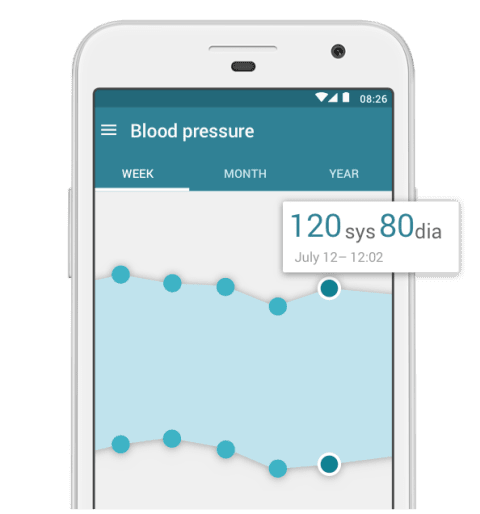What is hemophilia?
Hemophilia is a genetic blood disorder that impacts the body’s ability to make blood clots. Patients with hemophilia have reduced numbers of clotting proteins in their blood and, as a result, are at risk of experiencing excessive bleeding which can lead to health complications.
There are several different types of hemophilia and symptoms can range from mild to life-threatening. Whilst smaller cuts and scrapes are not so worrying, internal bleeding in the knees, ankles, and elbows can lead to severe complications.
About 1 in 10,000 people are born with the disease, which is also referred to as the ‘royal disease’ due to its prominent role in the history of European royalty. See Christmas Disease: The Incredible Impact of Hemophilia B on European Royalty
Keep reading to find out how hemophilia is inherited and diagnosed, and how patients learn to live with the disorder.
What are the different types of hemophilia?
What type of hemophilia a patient has depends on which specific clotting protein is deficient in the blood.
- Hemophilia A
This is the most common type of hemophilia, with about 80% of hemophilia patients suffering from type A. It is caused by a deficiency of factor VIII. - Hemophilia B
Hemophilia B is also eponymously referred to as Christmas disease after Stephen Christmas, the first patient to have been diagnosed with hemophilia B. This type of hemophilia is also the one that affected so much of European royalty in the 19th and 20th centuries. It is caused by a deficiency of factor IX. - Hemophilia C
This is the mildest and rarest form of the disease which is caused by a deficiency of factor XI.
How is it caused?
In most cases, it’s inherited. The X and Y sex chromosomes are what determines whether a person is male or female: women have two X chromosomes, and men have an X and a Y chromosome. A female inherits an X chromosome from both her mother and her father. A male inherits an X chromosome from his mother and a Y chromosome from his father.
Hemophilia almost always occurs in boys, and we know that the disease is passed from mother to son since, in most cases, the gene is found on the X chromosome. Most women with the gene simply carry it and do not suffer from the disease themselves.
It’s worth noting that around 30% of people with hemophilia do not inherit it; instead, it results from a change in the genes that are linked to the disease. In these cases, a person’s immune system attacks clotting factors in the blood. This can happen as a result of pregnancy, autoimmune conditions, cancer, or multiple sclerosis. This type of hemophilia is known as acquired hemophilia.
Diagnosis
Severe hemophilia usually becomes apparent in an infant before they reach the age of 1. However, those with milder cases of hemophilia often do not know they have the disease until they reach adulthood.
The most common method for diagnosing hemophilia is a blood test which can highlight a clotting factor deficiency. Women can also undergo tests during pregnancy to check for hemophilia in the baby. These tests involve removing a small sample of the placenta from the womb or extracting a sample of amniotic fluid for testing. However, there is a small risk that these tests can lead to problems such as a miscarriage or premature labor, and therefore it is advisable to consult a doctor about this before deciding to proceed with any testing.
If you have a family history of hemophilia and you're planning on having a baby, it is important to speak to your doctor.
What are the symptoms
Symptoms vary depending on the severity of the disease. In some cases, patients only bleed after surgery, but in others, it’s possible to experience spontaneous bleeding.
Some of the most common symptoms of hemophilia are:
- Unexplained nosebleeds
- Several large or deep bruises
- Unexplained and excessive bleeding from wounds due to injury or after surgery
- Bleeding gums
- Unusual bleeding after vaccinations
- Pain, swelling, or tightness in joints
- Blood in urine
- Unexplained irritability in infants
Complications
In severe cases, hemophilia patients can experience potentially life-threatening complications that can result from the disease itself, or the treatment. Here are some of the most common.
- Deep internal bleeding
Patients with hemophilia can experience bleeding in their muscles, particularly those around the knees, ankles, and elbows. The swelling that results from this local bleeding can cause numbness and pain in the limbs or joints. - Damage to joints
Internal bleeding can put pressure on joints, causing severe pain and potentially arthritis. - Infection
Patients with hemophilia are more likely to need blood transfusions. If they receive blood products contaminated with a virus or infection, it can result in the patient becoming infected. - Adverse reaction to clotting factor treatment
It is common for hemophilia patients to undergo clotting factor treatment to combat bleeding. In some cases, the immune system can react negatively to the new clotting factors in the blood and develop proteins that inactivate the clotting factors. These proteins are called inhibitors and can render treatment ineffective. - Brain hemorrhage
A hemorrhage is a type of stroke that occurs when an artery in the brain bursts and causes local bleeding. If you think that somebody is experiencing a brain hemorrhage, then you should contact the emergency services immediately. Signs to look out for are:
o A stiff neck
o Vomiting
o Slurred speech
o A severe headache
o Paralysis of face muscles
o Loss of co-ordination
How is hemophilia treated?
Unfortunately, there is no known cure for hemophilia. Nonetheless, it is still possible for patients to maintain a good quality of life by undergoing various therapies and making lifestyle changes. Below is a list of therapies and medications that are used to treat the disease.
- Replacement Therapy
This involves the replacement of whichever clotting factor is lacking in a patient’s blood through a tube placed in a vein. This process can be carried out in response to a particular bleeding episode that the patient is experiencing. However, it can also be performed on a regular basis at home as a preventative measure against bleeding episodes. The clotting factor which is administered can be sourced from donated blood, but it can also be artificially manufactured. - Vaccinations
As mentioned above, patients with hemophilia are likely to receive blood transfusions. It is important to receive vaccinations for diseases such as hepatitis B and C to help reduce or eliminate the risk of contracting these diseases from contaminated blood products. - Desmopressin
Patients with mild hemophilia can be injected with a hormone which stimulates the body to release more clotting factor. It is also possible to be administered using a nasal spray. - Clot-preserving medications
These prevent clots from disintegrating. - Fibrin sealants
These are especially useful for dental treatment because they can be applied directly to wounds to help stimulate the clotting and healing processes. - Physical therapy
This is a very important part of hemophilia treatment because it helps maintain the normal functioning of muscles and joints. It is particularly important after an accident, surgery, or bleeding episode to help combat the effects of internal bleeding on limbs and joints.
As well as various therapies and medications, lifestyle changes, and home remedies play an important role in treating hemophilia and preventing bleeding episodes. Here are some examples:
- Regular exercise
Physical activities such as swimming, cycling, and walking can help build up muscle and protect joints. However, it is essential that contact sports such as football, hockey, or martial arts are avoided since the risk of injury is too great. - Protecting children from injuries
Kneepads, helmets, and other protective gear can help avoid injury to a child who suffers from hemophilia. - Maintaining good dental hygiene
This helps avoid the need for invasive surgeries such as tooth extraction that can lead to excessive bleeding. Looking after your mouth is also important in the prevention of gum disease which leads to frequent bleeding of the gums. - Avoid certain pain medications
Pain killers such as aspirin and ibuprofen, which can aggravate the stomach lining when taken on an empty stomach, can increase the risk of bleeding. Instead, it is safer for hemophilia patients to use acetaminophen for general pain relief. - Avoid blood-thinning medications
Medications such as heparin, warfarin (Coumadin, Jantoven), clopidogrel (Plavix), prasugrel (Effient), ticagrelor (Brilinta), rivaroxaban (Xarelto), apixaban (Eliquis), edoxaban (Savaysa) and dabigatran (Pradaxa) can prevent blood from clotting. - First aid for minor injuries
Applying pressure to an injury or wound, as well as applying a bandage, can combat bleeding. In addition, using ice packs on bumps and sprains can help to reduce bleeding beneath the skin.
Hemophilia can be a dangerous condition that can result in life-threatening complications. However, by undergoing therapy and taking medications to mediate the symptoms of the disease, as well as being cautious to avoid injuries that may cause bleeding, patients with hemophilia can maintain a very good quality of life. Hemophilia patients can also benefit from being open and communicative about their condition to allow those around them to offer better support. In reaching out to others and helping them to understand the condition, patients can ensure that they are adequately supported both in everyday life, and in case of an emergency or sudden bleeding episode. Speaking to a counselor can also help patients to deal with their disorder both physically and mentally.



